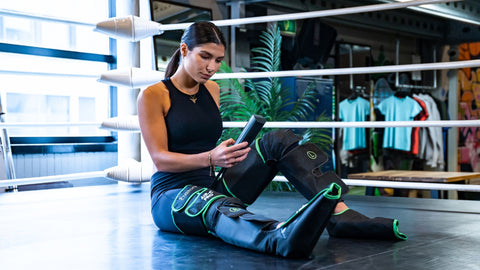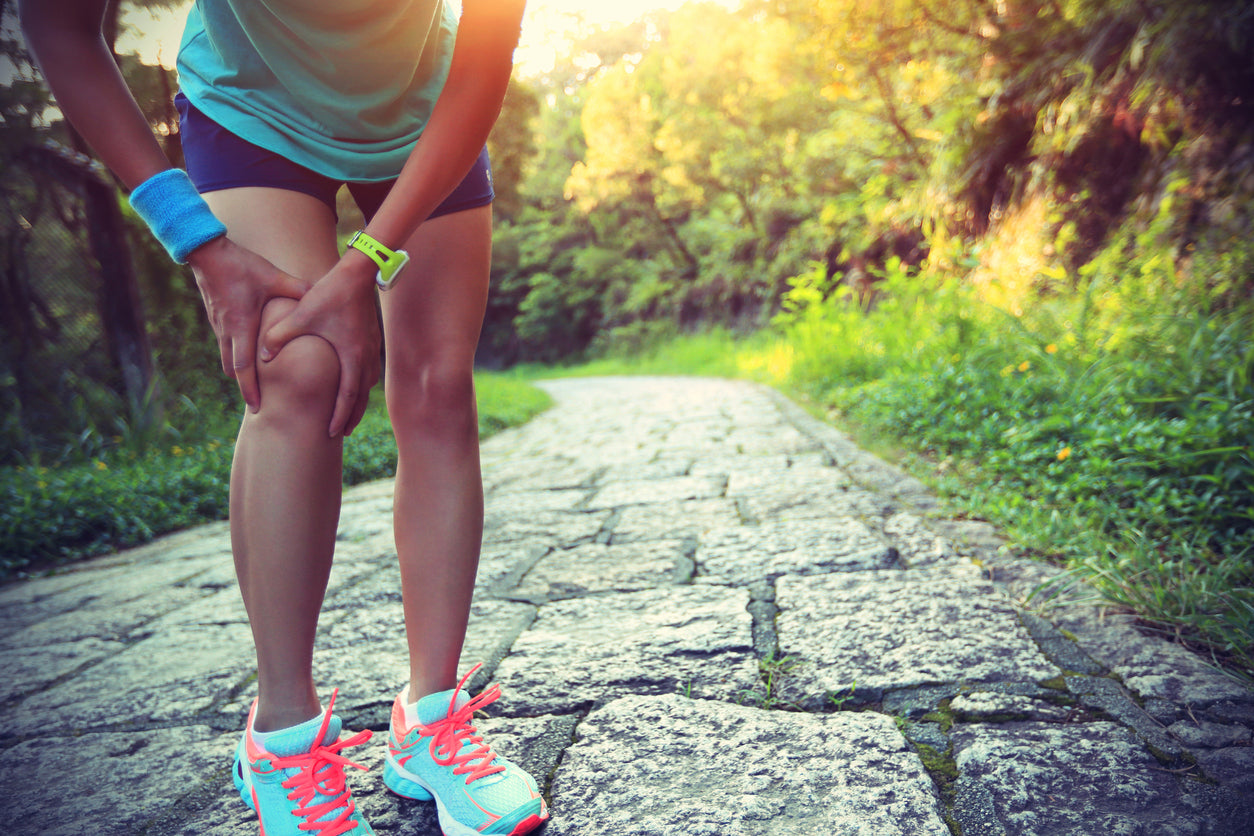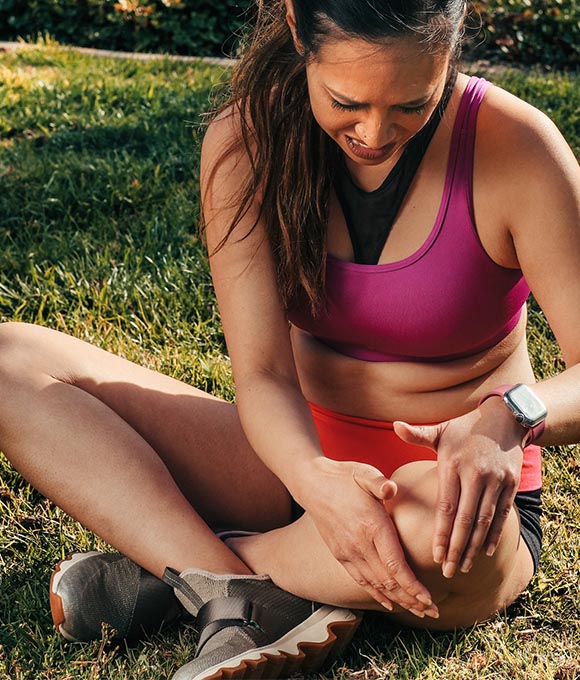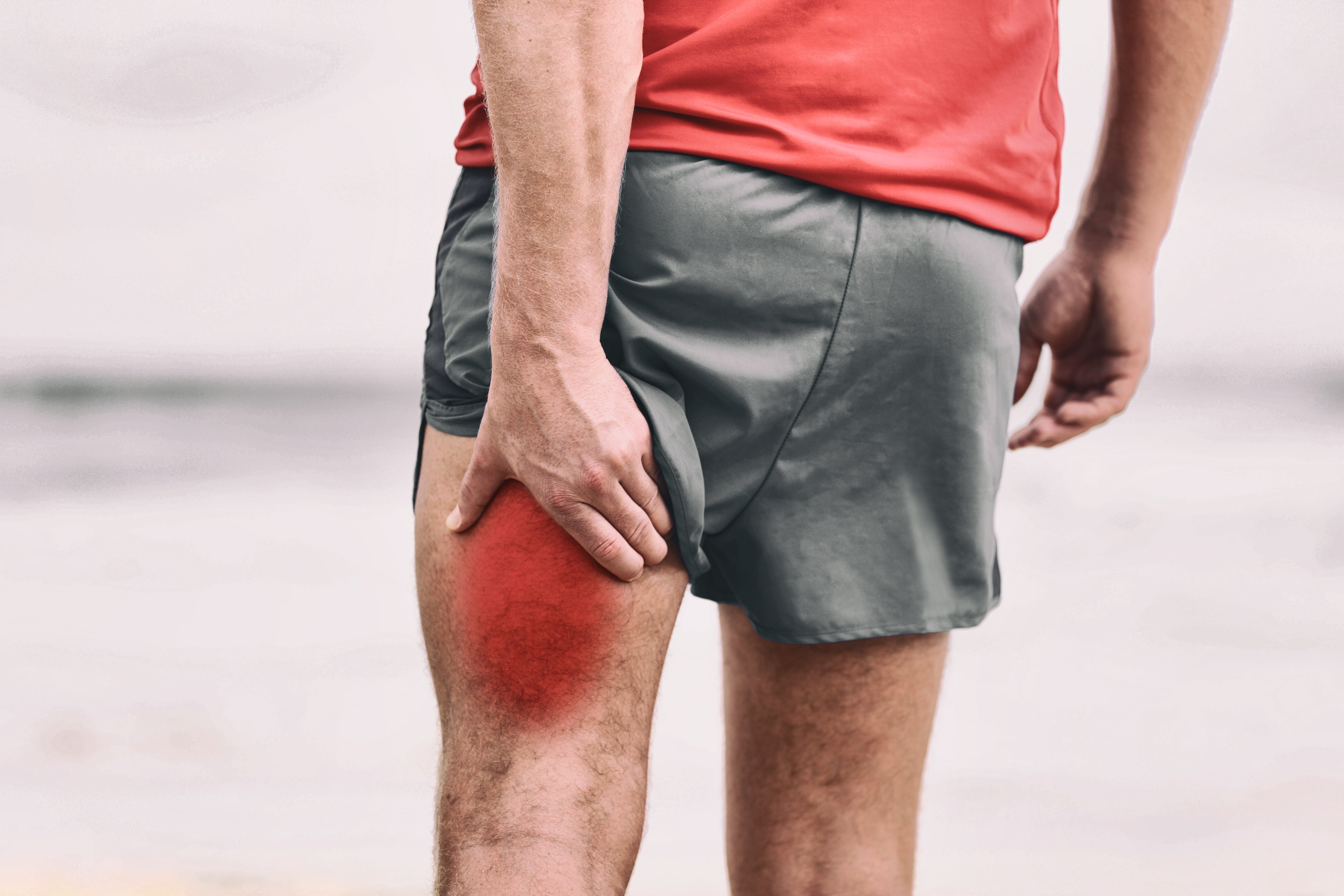Have you ever gone for a run and experienced leg soreness afterwards?
Running can be a great way to get in some exercise and stay fit, but like any physical activity, it can also come with aches and pains.
One of the most common pains people experience after running is leg soreness.
This health condition is a common complaint among runners ranging from mild to severe. It occurs when the muscles in the legs become fatigued and overworked from running. These muscles include the quadriceps, hamstrings, calves and glutes.
While it's normal to experience some soreness in these muscles after a run, knowing how to manage and reduce the amount of soreness is essential for maintaining an active lifestyle in the long run.
In this article, you'll learn about the causes of leg soreness after running, how to treat it and what you can do to prevent it from happening.
Let's roll!
Causes of Leg Soreness After Running
Experiencing leg pain from a run can be caused by various factors, including muscle fatigue, dehydration, and overuse. Let's look at each of these causes in more detail.
1. Muscle fatigue
Muscle fatigue is one of the most common causes of sore leg muscles.
When you go for a run, your leg muscles are working hard to propel you forward. Over time, these muscles become fatigued and can start to feel sore. Leg muscles like the quadriceps, hamstrings, calves and glutes are especially prone to fatigue after running.
With sore calves, quadriceps, hamstrings and glutes, you leg may no longer produce the same force they could before leading to leg soreness.
2. Dehydration
Dehydration is another common cause of leg soreness after going for a run.
With running comes sweat, and when you sweat, you lose water. If you don't replace the lost fluids, your body can become dehydrated. This can even lead to onset muscle soreness as your leg muscles are not getting enough water to function properly.
With dehydrated leg muscles, you may even experience soreness and cramping.
3. Wearing poorly fitted or inadequate running shoes
What kind of shoes do wear when going for a run?
Are they the right size and fit for your feet? Do they provide enough cushioning and support when in motion?
Or maybe you just wear random pairs of shoes that don't provide the right support for your feet. Well, if you're on this table, then you may be setting yourself up for sore leg muscles.
Wearing poorly fitted or inadequate running shoes can lead to overuse injuries like shin splints and plantar fasciitis, which can cause leg soreness. This is because poorly fitted shoes can cause your feet to move around too much in the shoe, leading to friction and blisters.
They also may not provide enough cushioning and support for your feet, leading to soreness in the leg muscles.
4. Overuse

Finally, overuse can also lead to having sore leg muscles after a run.
If you push yourself too hard or run too often, your muscles may not have enough time to recover between runs. This can lead to muscle fatigue and soreness as your muscles are not given the necessary time to recover.
So these are just a few possible causes of leg soreness. While running can be a great way to stay fit, it's important to make sure you're taking the necessary steps to prevent and treat any leg soreness that may occur.
Let's explore how you can do that in the next section.
Dealing with Leg Soreness After Running
If you're experiencing leg pain, there are a few things you can do to help manage muscle pain and reduce the amount of soreness.
Here are some tips to follow:
1. Get a massage
Getting a massage can help to reduce muscle tension and soreness. Massage therapy can also help to improve circulation, which can help your muscles recover faster.
Massage helps to increase blood flow to the affected area, which can help reduce muscle inflammation and strain. It also helps to relax the muscles, which can help reduce tension and soreness.
If going for a massage session sounds like too much of a hassle, you can also try using a massage device at home. Devices such as foam rollers and massage guns have been proven effective in reducing muscle soreness. We'll explore these devices in more detail in the next section.
2. Take a hot bath or shower
Another way to reduce leg pain from a run is to take a hot bath or shower.
The heat from the water helps to relax your muscles and increase circulation, which can help reduce muscle strain and severe pain. Additionally, using warm water can help to loosen tight muscles, which can help relieve soreness.
You can also add Epsom salts to your bath or shower, as they can help you recover faster.
3. Try ice

Applying ice to your legs can be a great way to relieve leg pain from a run.
Ice helps reduce sharp muscle pain by constricting the blood vessels in the affected area. This can help to reduce swelling and soreness.
It's also great for reducing muscle spasms and pain. To use ice, wrap an ice pack in a towel and apply it to the affected area for 15-20 minutes. You can also take ice-cold water baths for 10-15 minutes to reduce soreness.
4. Take an over-the-counter anti-inflammatory
Another way to reduce sore leg muscles is to take an over-the-counter anti-inflammatory such as Ibuprofen.
Anti-inflammatories like Ibuprofen help to reduce inflammatory muscle tissues, which can help reduce the amount of soreness you experience after running. Just ensure that you follow the instructions on the packaging and don't take more than the recommended dosage.
Following these tips can help your leg muscles feel better and get back to your daily activities. You can also combine these tips with fitness devices to help you stay in shape and reduce the soreness you experience after running.
Let's look at a few of these devices in the next section.
Using Fitness Tools to Relieve Leg Soreness After Running
Using fitness devices can be a great way to reduce sore leg muscles.
These devices can help to increase blood flow, reduce inflammation, and relax the muscles. Here are some of the most popular fitness devices that can help with leg soreness:
1. Massage guns
A massage gun is one of the best fitness devices for relieving leg pain after a run.
Massage guns are handheld devices that use percussion therapy to stimulate your leg muscles and increase blood flow for pain relief. They come with a variety of attachments that can be used to target different areas of the body.
Using a massage gun after running is a great way to reduce leg soreness and get back to your regular routine.
2. Foam rollers
Ever heard of foam rollers?
Foam rolling is a great way to keep your leg muscles healthy and reduce soreness.
They work by applying pressure to your leg muscles, which helps to increase blood flow and relax sore muscles after running.
Using a foam roller to relieve leg pain from a run is very easy. Just roll the foam roller up and down your leg muscles for 10-15 minutes at a time. Once you're done, you should feel a significant reduction in soreness.
3. Compression massagers like the Air-C Pro

Compression massagers are another excellent tool for soothing sore leg muscles from a run.
These devices use air pressure to massage your muscles and increase blood flow, which can help reduce inflammation and pain. One of the most popular compression massagers is the Air-C Pro.
This device is designed to be used on your legs and can help to relieve pain in just a few minutes. Using the Air C Pro is very easy - attach the device to your legs and turn it on. The device will then cycle through different levels of air pressure, massaging your legs and helping to reduce soreness.
Using these fitness devices can help relieve pain and get back to your regular routine. Just ensure that you follow the instructions on the packaging and don't use any of these devices for more than 15 minutes at a time.
Next, we'll look at some prevention strategies that you can use to reduce this condition.
How to Prevent Leg Soreness After Running
Preventative strategies are vital to keeping your leg muscles healthy. Here are some tips you can use to help prevent soreness in the first place:
1. Warm up and cool down properly
One of the best ways to reduce leg soreness is to warm up and cool down properly.
Before you run, do some dynamic stretching and light jogging to get your muscles ready for your exercise routine. After your run, take a few minutes to do some static stretching and foam rolling to help reduce muscle tension.
By performing these forms of exercise, you can help to eliminate any risk of sore leg muscles.
2. Invest in good quality running shoes
Remember when we discussed how wearing the wrong shoes can result in sore leg muscles?
Investing in good quality running shoes is one of the best ways to prevent this from happening. These shoes are designed to provide the right amount of cushioning and support for your feet preventing any unnecessary strain on your legs.
With the right pair, you can enjoy a comfortable and enjoyable running experience without worrying about soreness.
3. Increase mileage slowly
One of the most important tips for preventing leg soreness is to increase your mileage slowly. If you try to increase your mileage too quickly, it can put a lot of strain on your legs and lead to soreness.
To avoid this, gradually increase your mileage over time. Start with shorter distances and gradually work up to longer ones. This will give your body time to adjust and reduce the risk of this health condition.
4. Stay hydrated
Staying hydrated is an important part of preventing leg soreness. When you become dehydrated, your muscle fibers can become tight and sore. This can lead to increased fatigue and a decrease in performance.
To stay hydrated, make sure to drink plenty of water before, during, and after your run. You should also consider adding electrolytes to your water if you are running for longer distances.
5. Get enough rest
Getting enough rest is essential for keeping your leg muscles fit and healthy. When on a run, your body needs time to recover and repair itself.
Not getting enough rest can lead to fatigue, muscle soreness, and an increased risk of acute injury. To ensure that your body has enough time to recover, get at least 7-8 hours of sleep each night and take rest days between runs.
6. Eat healthy
Craving something healthy? A balanced diet is another crucial factor in keeping your leg muscles in good condition.
Eating nutrient-rich foods like fruits, vegetables, lean proteins, and complex carbohydrates can help to fuel your runs and reduce muscle soreness. Additionally, ensure you get enough vitamins and minerals from your diet to support your body's recovery process.
Following these tips can help reduce severe or mild soreness after running and get back to your regular routine. It's important to remember that everyone's body is different, so it may take some trial and error to find the right strategies for you.
Frequently Asked Questions
Got questions about leg soreness after running?
We've got answers.
In this section, we'll answer some of the most commonly asked questions about this health condition so you can get back to your regular routine. Let's roll!
How long does it take for leg soreness to go away after running?
The amount of time it takes for leg soreness to go away after running will depend on the intensity and duration of your run.
Generally, it can take anywhere from a few hours to several days for the soreness to subside. To help reduce the time it takes for your legs to recover, ensure you warm up and cool down properly before and after your runs.
What should I do if my leg soreness does not go away?
If your leg soreness does not go away, it is crucial to take a break from running and give your body time to rest and recover.
Additionally, you should seek medical attention if the pain persists or worsens. Your health care provider may recommend physical therapy or other treatments to help reduce the pain and inflammation in your legs.
Physical therapy can help to strengthen the muscles in your legs and improve your running form, which can help to reduce the risk of leg soreness in the future.
What medical conditions can cause leg soreness after running?
Medical conditions such as arthritis, tendonitis, and bursitis can all cause leg pain from a run.
Arthritis is an inflammation of the joints that can cause pain and stiffness in the legs, while tendonitis is an inflammation of the tendons that can lead to sharp pain and leg swelling. Bursitis, on the hand, is an inflammation of the bursae, which are small sacs filled with fluid that cushion the joints.
If you are experiencing any form of leg soreness and suspect that it may be caused by a medical condition, it is important to seek medical advice from your health care provider.
Conclusion
Dealing with leg soreness after running is a common issue experienced by runners across all levels.
Fortunately, there are several strategies you can use to reduce the risk. This starts with identifying the cause of your leg soreness and then taking the necessary steps to prevent it.
Staying hydrated, getting enough sleep, and eating a balanced diet are all important steps in helping to reduce muscle soreness and inflammation. You can also incorporate massage tools like massage guns and foam rollers into your routine to help improve your athletic performance and reduce any risk of leg soreness.
By sticking to these treatment and prevention strategies, you can treat your pain and get back to your regular routine in no time. Let us know if you have any other questions about experiencing leg soreness!
You can also share your experiences with us in the comments below.





